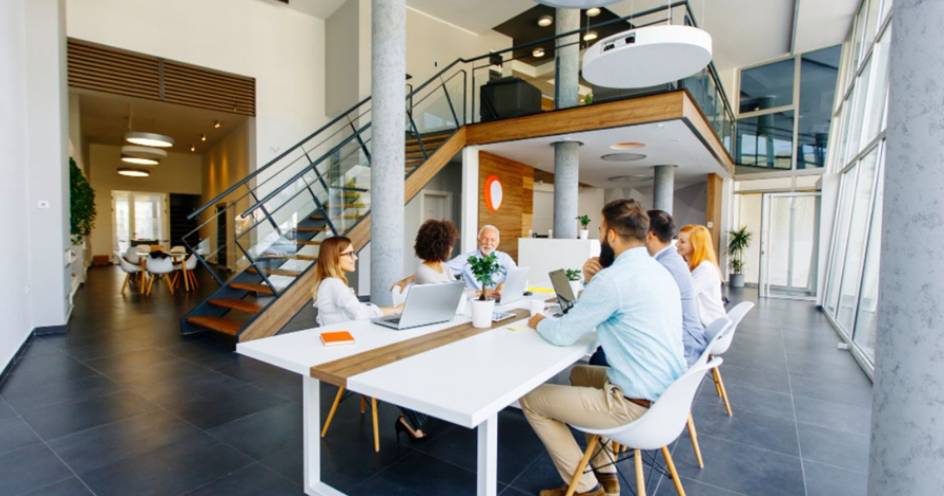
In today's business world, many companies, especially startups and small businesses, are operating in limited office spaces. However, having a small office space doesn't mean compromising on functionality or style. With thoughtful planning and the right furniture choices, it is possible to maximize small office spaces and create a productive and visually appealing work environment. In this article, we will explore effective strategies to optimize small office spaces through functional and stylish furnishing, ensuring that every square foot is utilized efficiently.
Embrace a Minimalistic Approach
When working with limited space, adopting a minimalistic approach is key. Clutter and excess furniture can make a small office feel cramped and disorganized. Start by decluttering and removing unnecessary items. Keep only the essentials, such as desks, chairs, and storage solutions. A clutter-free environment not only creates more physical space but also promotes a sense of calm and focus.
Assess Your Needs and Plan Efficient Layouts
Before selecting furniture for your small office, it is crucial to assess your specific needs and plan efficient layouts. Consider the workflow, number of employees, and the nature of tasks performed in the office. Determine the key functional areas, such as workstations, meeting spaces, and storage areas. By understanding these requirements, you can make informed decisions about the furniture and layout that will best serve your team's needs.
Opt for Space-Saving Furniture
Choosing space-saving furniture is essential for maximizing small office spaces. Here are some options to consider:
a) Compact Desks: Look for desks that are designed specifically for small spaces. Compact desks with built-in storage solutions, such as shelves or drawers, can help save valuable floor space.
b) Multifunctional Furniture: Invest in multifunctional furniture pieces that serve multiple purposes. For example, a desk that can be converted into a standing desk, or storage cabinets that can double as room dividers, providing privacy and functionality simultaneously.
c) Wall-Mounted Storage: Utilize vertical space by incorporating wall-mounted shelves and storage units. These not only free up floor space but also provide additional storage capacity for files, books, and office supplies.
Enhance Natural Lighting and Openness
Small office spaces can feel cramped and confined if not properly designed. Enhancing natural lighting and creating a sense of openness is crucial. Consider the following tips:
a) Use Mirrors: Mirrors can create an illusion of space by reflecting light and making the office appear larger. Place mirrors strategically to maximize their impact.
b) Clear Glass Partitions: Instead of solid walls, consider using clear glass partitions for meeting rooms or private offices. This allows natural light to flow throughout the office, giving the illusion of more space.
c) Light-colored Walls: Paint the walls in light and neutral colors to make the office feel airy and open. Light colors reflect more light, creating an illusion of a larger space.
Prioritize Storage Solutions
Effective storage solutions are vital for maintaining a clutter-free small office. Here are some ideas:
a) Vertical Storage: Utilize vertical space by incorporating tall bookshelves or cabinets. This allows for efficient storage of documents, supplies, and personal items.
b) Under-Desk Storage: Invest in desks with built-in storage compartments or add under-desk storage units to maximize the use of space.
c) Floating Shelves: Install floating shelves on the walls to store books, folders, or decorative items. They take up minimal space while providing functional storage.
Utilize Shared Spaces and Collaborative Furniture
In small office spaces, it is crucial to optimize shared areas and encourage collaboration. Consider the following:
a) Shared Workstations: Implement shared workstations or hot-desking arrangements to minimize distractions and maximize space utilization. This allows employees to share resources and work efficiently in a compact office environment.
b) Collaborative Furniture: Incorporate furniture that promotes collaboration and teamwork. For example, modular desks and tables that can be easily reconfigured for group discussions or brainstorming sessions. Collaborative furniture encourages interaction and makes the most of limited space.
Harness Technology for Space Efficiency
In the digital age, technology can significantly contribute to space efficiency in small offices. Consider these suggestions:
a) Cloud Storage: Embrace cloud storage solutions to minimize the need for physical file cabinets and storage space. Storing files digitally not only saves physical space but also improves accessibility and organization.
b) Wireless Connectivity: Opt for wireless technology to reduce cable clutter and create a cleaner and more streamlined workspace. Wireless printers, routers, and charging stations eliminate the need for excessive wiring.
c) All-in-One Devices: Choose all-in-one devices, such as multifunctional printers or combined scanner-printer units, to minimize the number of devices and save desk space.
Incorporate Ergonomic Furniture for Comfort
Even in small office spaces, employee comfort should not be compromised. Ergonomic furniture is essential for maintaining employee well-being and productivity. Invest in ergonomic chairs, adjustable desks, and proper lighting to create a comfortable and healthy work environment.
Add Personal Touches and Greenery
While optimizing space, don't forget to infuse the office with personality and a welcoming atmosphere. Allow employees to personalize their workstations with photos, plants, or artwork. Introduce indoor plants to bring a touch of nature and improve air quality. These small touches contribute to a more pleasant and inspiring workspace.
Regular Maintenance and Organization
Finally, maintaining an organized and well-maintained office is crucial for maximizing space efficiency. Encourage employees to clean up after themselves and establish regular decluttering routines. Implement an organization system for documents and supplies to avoid unnecessary clutter and confusion.
Conclusion
Maximizing small office spaces requires careful planning and thoughtful furniture choices. By embracing a minimalistic approach, selecting space-saving furniture, optimizing natural lighting, incorporating effective storage solutions, and promoting collaboration, businesses can optimize their small office spaces for both functionality and style. Additionally, harnessing technology, prioritizing employee comfort, and adding personal touches contribute to a pleasant and productive work environment. Remember, no matter the size of your office space, with the right strategies and furniture selections, you can create an inspiring and efficient workspace that maximizes every square foot.



























